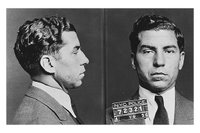
What’s Wrong With This Picture
Now the truth of the matter is that we all do it. We do it every day. Every day we wake up, shower, primp and comb; dress, eat breakfast and race to our daily grinds. Every day we go out carefully into our socially constructed realities. In the process, each and every day we use stereotypes or typifications. For instance in a busy social setting (i.e. - street corner at rush-hour) our minds use social constructs to quantify and qualify all the data that is inputted by our senses.
“The reality of everyday life contains typificatory schemes in terms of which others are apprehended and “dealt with” in face to face encounters. Thus I apprehend the other as “a man” [“a woman”], a European, a buyer “a “jovial type” [etc…].” * Unless challenged (whether internally or externally) these typifications will hold sway until further notice and will affect one’s actions in this social milieu. The other person also apprehends us in a typified way. The ensuing interaction is a negotiation of sorts.
“Thus, most of the time, my encounters with others in everyday life are typical in a double sense – I apprehend the other as a type and I interact with him[her] in a situation that is itself typical.” ** The typifications of social interaction become more and more anonymous the further away they are from the immediate face to face social interaction. In fact these typifications inevitably become empty projections; social constructs that are almost completely devoid of individualized content. Some of this content may even contain elements of the mythical or legendary. This fact does not impede the anonymity of these constructs or typifications to enter as decisive elements in the reality of everyday life. The social reality of everyday life is thus cognitively received in a continuum of typifications.
Now when one sees this swarthy looking man of Mediterranean descent we immediately typify or stereotype him. Question is what “typificatory scheme “ does one envision for this persona. Even if this were not a “mug-shot”, I do not believe it would be a positive objectification. Irrespective of its context we have already woven a stereotype of him. We have projected our cognitive mindsets onto him – real or imagined- legendary or based on fact. Of course this is Charles "Lucky" Luciano (1897-1962) and yes he was a legendary Italian American mobster: considered the father of the National Crime Syndicate and the mastermind of the massive postwar expansion of the international heroin trade.
But why has Luciano been singled out and given the dubious honor of representing mobsters? Why doesn’t the site: Mobster Threat Generator (affiliated with Bright Bomb Inc. of California) offer other choices such as: Dutch Schultz , Meyer Lansky or even Bugsy Siegel just to name a few of Luciano’s contemporaries? Why has the HBO hit series “The Sopranos” chosen to depict Italian Americans that are involved in organized crime? Why not portray an Italian American/Canadian family that works hard and contributes in a positive fashion to the American/Canadian way of life? Because it plays better that’s why. Because it’s easier to prop up these typifications that contain mythical elements than to portray reality without prevarication. Because it’s hollywood. Because a North American viewing public eats it up.
...Rant over!
-----------------------------------------------------------------------
* & ** - (Berger & Luckman:1967 - "The Social Construction of Reality")
No comments:
Post a Comment